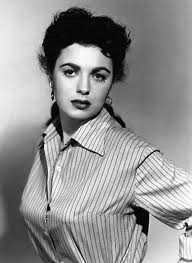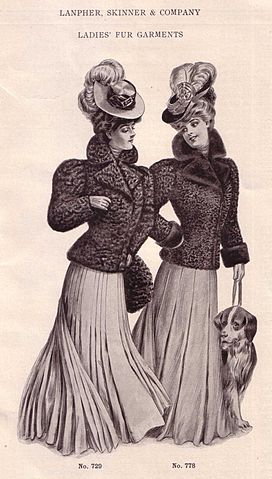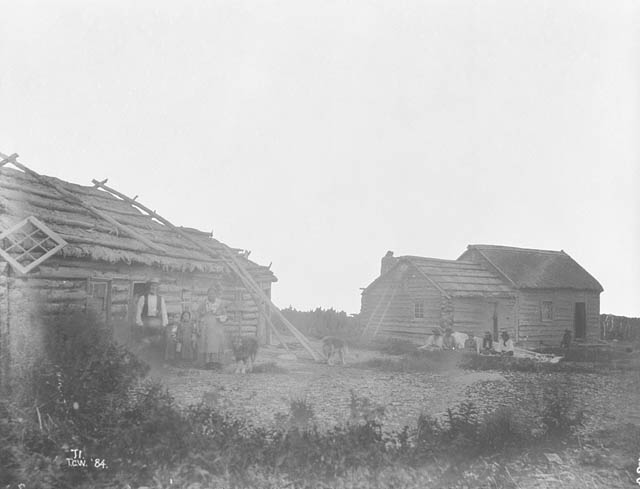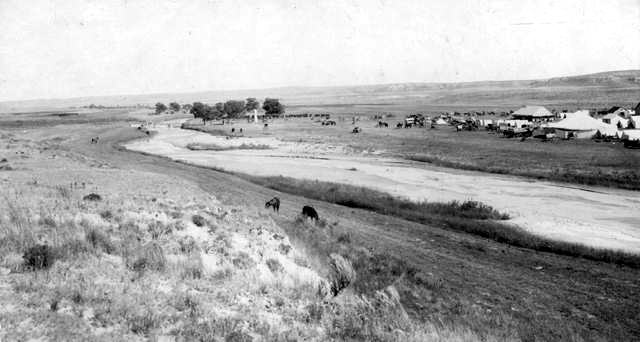There was a weeklong
“Great Sioux Uprising” in Minnesota in 1862 that took the lives of 100s, and 38
Santee Sioux were later hanged. This is not that story. There was a Cherokee
chief, Stand Watie (1806-1871), who served as brigadier general of the
Confederate Army during the Civil War. This is not his story either. But both
appear in this mash-up of western history and Hollywood imagination, as horse
thieves make trouble between the cavalry and Sioux chief Red Cloud.
Plot. The cavalry in some unnamed frontier territory
is eagerly buying up horses from off the range to deliver to the Union Army for
its war effort against the South. Lady rancher and livery owner Joan Britton
(Faith Domergue) and horse trader Steven Cook (Lyle Bettger) are friendly
competitors in this enterprise. Each has their eye on the horse herds of the
nearby Sioux.
It is rumored that
Cherokee general Stand Watie (Glen Strange) is also in the market for horses.
Given the Sioux’s growing distrust of the whites, he is believed to have an
advantage in dealing with Red Cloud (John War Eagle).
 |
| Faith Domergue and the 1950s bra |
Domergue approaches
Red Cloud, but he sends her away empty-handed. Bettger and an eye patch-wearing
partner Uriah (Stacy Harris) don’t bother with formalities. They run off a
large herd of the horses, shooting any of the Indians who give chase. Enter
Jeff Chandler as a disillusioned Army surgeon who treats both an injured brave
and an injured horse, a favorite of the chief’s. Chandler promises to find the
thieves and see that they’re punished. The chief scoffs.
In town, Chandler is
persuaded by Domergue to set up shop as a veterinarian. Meanwhile, local
ranchers are learning that as they contract their horses to Bettger for sale to
the Army, he is cheating them. Chandler tells them to organize and sell
directly to the Army. But only one has the courage to try it, and Harris kills
him, stabbing him with a scalpel he has stolen from Chandler’s kit of surgical
instruments.
Chandler is taken
prisoner by Bettger, but when Chandler gets the best of him in a fistfight,
Bettger collapses with an attack of appendicitis. So the good doctor performs
an appendectomy with a sheath knife. Returning to town, Chandler finds the
locals ready to string him up, his scalpel having been found by the body of the
dead rancher. There follows an escape and a barn burning.
 |
| The big kiss - Domergue and Chandler |
Back at the Indian
camp, chiefs of all the Plains tribes gather to consider General Stand Watie’s
offer to buy their horses, with several other Confederate officers standing by.
Red Cloud is shocked when he sees the general smack down a black servant who
has stood too close to him. While Chandler has to run a gauntlet between
Indians with clubs to prove that he has an Indian heart, Bettger sends word to
the fort to come stop an “uprising.”
Chandler makes his
appeal to the chiefs. The
bluecoats, he says, have a belief that no man should be enslaved for the color
of his skin. It’s the tipping point that turns the chiefs against Stand Watie.
After much gunfire,
a horse stampede, another escape, another struggle between Chandler and
Bettger, and the deaths of the villains, the cavalry is diverted before
descending on Red Cloud’s camp. In the final scene, Chandler’s confidence has
been restored, and he is heading back to the front to resume his duties as a
field surgeon. There’s talk of marriage to Domergue when he returns, and they
give each other a big kiss.
 |
| Stand Watie |
History vs.
Hollywood. The movie is
standard brand western history mixed with bait-and-switch advertising. There is,
in fact, no Sioux uprising in the film. And for his part, Stand Watie seems
unlikely to have ventured onto the northern plains to buy Sioux horses. Though
to give the screenwriters some credit for homework, it had to be news to
audiences in 1953 (or today for that matter) that an Indian served as
commanding officer on either side of the Civil War.
For a change in this
western, Jeff Chandler is playing a white man, and Chief Red Cloud is actually
played by an actor with an Indian name—but Indian in name only. John War Eagle,
who played Indian roles in many movies, was born John Edwin Worley Eagle
(1901-1991) in Leicestershire, England.


.png)

_-_NARA_-_297087.tif/lossy-page1-373px-St._Paul_Island,_Alaska._Native_barabara_and_Aleut_boy._(Alaska_Investigations-1914)_-_NARA_-_297087.tif.jpg)
.png/308px-Harness_(PSF).png)

.png/336px-Esker_(PSF).png)

_Aleutian_Islands.JPG/360px-Parka_(Kamleika)_Aleutian_Islands.JPG)

























